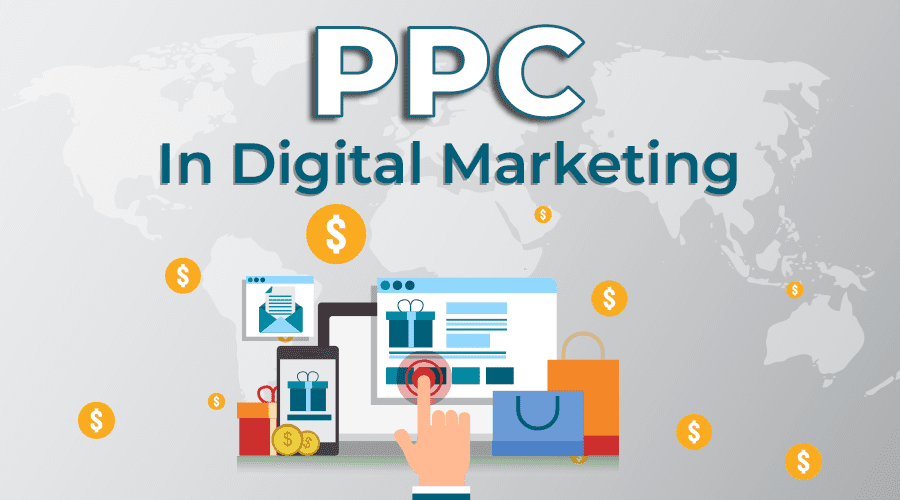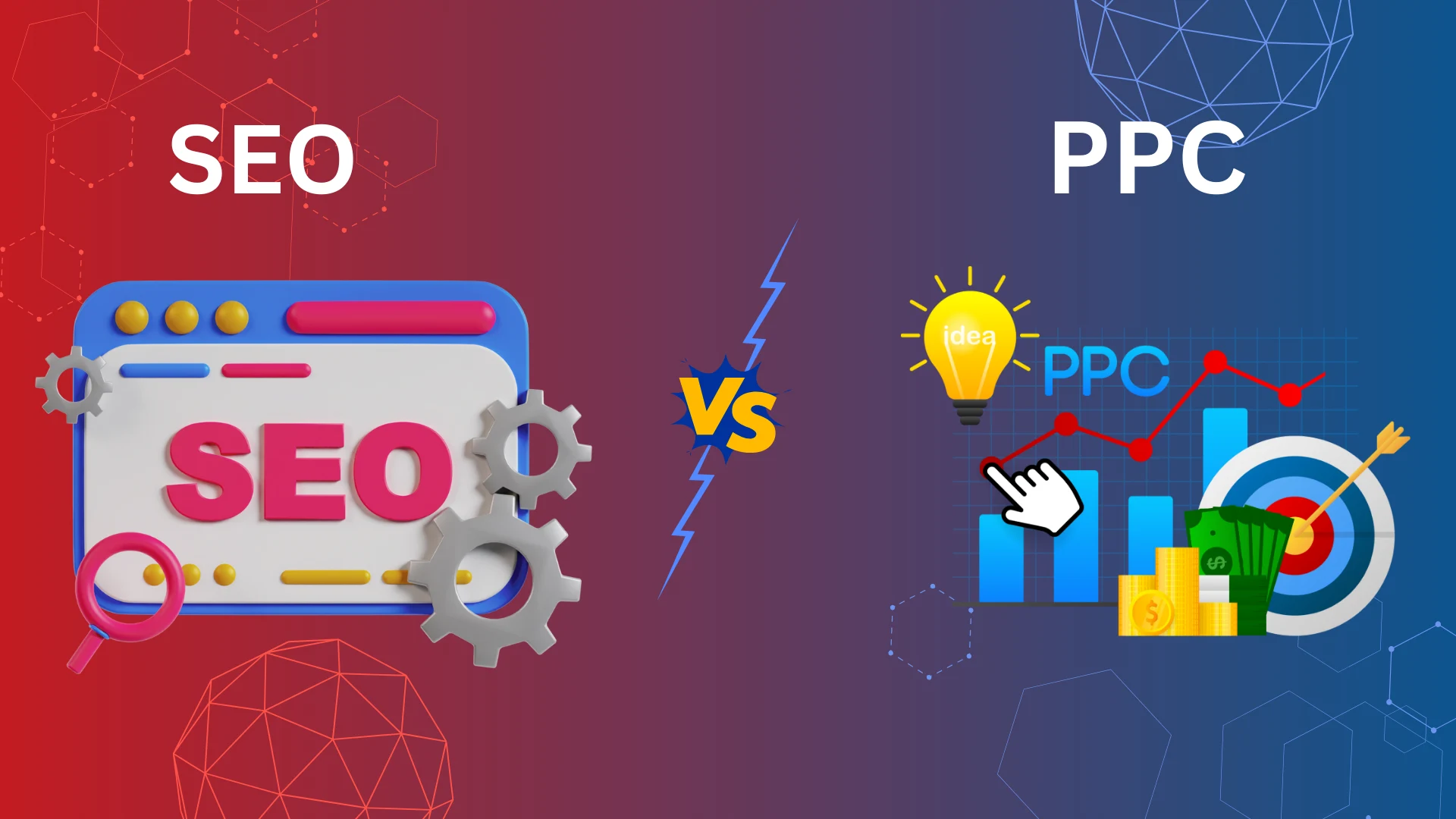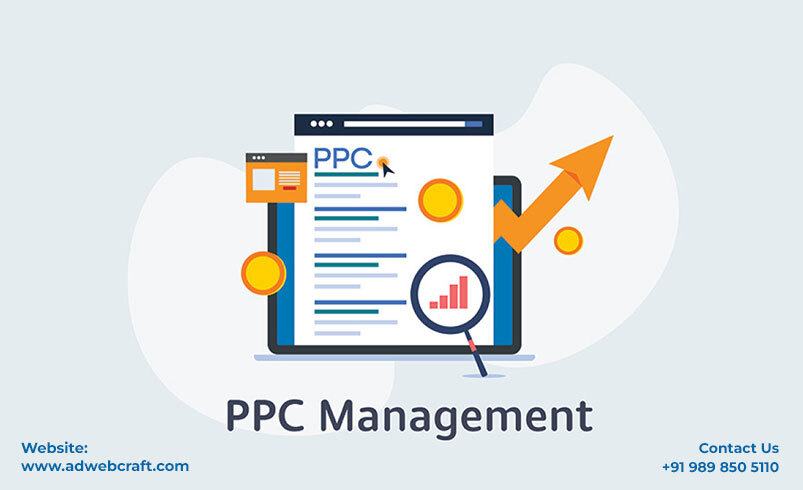PPC marketing, short for Pay-Per-Click marketing, is a powerful and highly targeted advertising model that has revolutionized how businesses attract and engage potential customers online. By enabling advertisers to display their ads prominently on search engines and other platforms, PPC marketing ensures immediate visibility and allows businesses to reach their audience at the right time and place.
It operates on a cost-effective pay-as-you-go system where advertisers only pay when a user clicks on their ad, making it a measurable and scalable strategy. In this blog, we will delve into what PPC in digital marketing entails and break down how PPC marketing works. We will outline proven strategies to leverage the best PPC marketing techniques to drive traffic, generate quality leads, and maximize your return on investment (ROI).
What is PPC in Digital Marketing?
PPC in digital marketing is an advertising model where advertisers pay a fee each time someone clicks on their ad. It is essentially a way of buying visits to your site rather than attempting to earn those visits organically. PPC is widely used on platforms like Google Ads, Facebook Ads, and LinkedIn Ads to drive immediate traffic and generate leads. Specifically, Google PPC marketing allows businesses to display their ads at the top of search engine results pages, targeting users actively searching for relevant keywords. On the other hand, Facebook PPC marketing leverages the platform’s robust audience targeting features, enabling advertisers to reach users based on demographics, interests, and behavior. Both approaches offer unique benefits and can be tailored to meet specific business goals.

What is PPC in Digital Marketing?
- Targeted Reach: Advertisers can target specific demographics, locations, devices, and even times of the day.
- Measurable Results: PPC campaigns allow precise tracking of clicks, conversions, and costs.
- Quick Results: Unlike SEO, PPC delivers almost instantaneous visibility.
- Cost Control: With proper management, you can optimize campaigns to minimize spending while maximizing returns.
How Does PPC Marketing Work?
PPC marketing works through an auction-based system where advertisers bid on keywords relevant to their audience. Here is a step-by-step process:
- Keyword Research: Identify keywords your target audience is likely to use.
- Ad Creation: Develop compelling ad copy and visuals that grab attention.
- Campaign Setup: Choose a PPC platform, set a budget, and define your bidding strategy.
- Ad Placement: Ads appear at the top of search engine results or social media feeds.
- Performance Monitoring: Track metrics like click-through rates (CTR), conversion rates, and cost per click (CPC).
- Optimization: Refine campaigns by adjusting bids, targeting, and ad content to improve ROI.
Best PPC Marketing Strategies
PPC marketing success depends on the implementation of effective strategies that maximize both reach and ROI. One critical strategy is precise audience targeting, which involves defining specific demographics, interests, and behaviors to ensure your ads reach the right people. Another vital approach is leveraging retargeting campaigns to reconnect with users who have previously interacted with your website but didn’t convert. Additionally, incorporating ad scheduling helps optimize ad delivery during peak hours when your target audience is most active.
A focus on mobile optimization ensures that ads perform seamlessly on all devices, increasing engagement. Lastly, continuously monitor performance metrics and utilize A/B testing to refine your campaigns, ensuring sustained success and relevance in the competitive digital landscape.
1. Choose the Right Keywords
Effective keyword selection is crucial in PPC marketing. Use tools like Google Keyword Planner to find high-performing keywords with manageable competition.
2. Optimize Landing Pages
Your landing pages should be relevant, fast-loading, and designed to convert visitors into leads. Align your landing page content with your ad’s message.
3. Use Ad Extensions
Enhance your ads with extensions like site links, call buttons, or location information to improve visibility and CTR.
4. Leverage Negative Keywords
Negative keywords prevent your ads from appearing in irrelevant searches, saving budget and increasing targeting precision.
5. Test and Analyze
Regularly A/B test ad elements such as headlines, CTAs, and visuals to determine what works best. Monitor data to identify trends and make data-driven decisions.
SEO vs. PPC: Complementary Strategies
SEO and PPC are two powerful digital marketing strategies that, when used together, can create a highly effective and balanced approach to online visibility. Search Engine Optimization (SEO) focuses on improving a website’s organic rankings through content optimization, keyword targeting, link building, and technical improvements, making it a long-term strategy that builds brand authority and trust over time.
On the other hand, Pay-Per-Click (PPC) advertising provides immediate visibility by placing ads at the top of search engine results, ensuring instant traffic, leads, and conversions. While PPC is highly effective for short-term goals, such as launching new products or seasonal promotions, SEO delivers sustainable results by generating consistent organic traffic without the need for ongoing ad spend.
The best approach is to integrate both strategies—PPC can provide valuable keyword insights and immediate conversions, while SEO works in the background to establish credibility and long-term success. Additionally, PPC can help bridge the gap while SEO efforts gain momentum, ensuring continuous traffic flow. By leveraging both methods, businesses can dominate search engine results, maximize their reach, and create a comprehensive digital marketing strategy that balances short-term gains with long-term growth.

Frequently Asked Questions
1. What is PPC in Terms of Marketing?
A. PPC in marketing is a paid advertising model where businesses pay for clicks on their ads, driving traffic to their websites or landing pages.
2. What is SEO vs. PPC?
A. SEO (Search Engine Optimization) is a strategy for gaining organic visibility, while PPC is a paid method for instant visibility on search engines and platforms.
3. What is PPC and SEM Marketing?
A. PPC is a subset of SEM (Search Engine Marketing), which includes all paid strategies to increase search engine visibility.
4. What is CPC vs. PPC in Marketing?
A. CPC (Cost Per Click) refers to the cost incurred for each click in a PPC campaign. CPC is a metric within the broader PPC model.
Conclusion: Elevate Your Marketing with ADwebcraft
PPC marketing is a powerful tool to drive traffic, generate leads, and achieve measurable results. By implementing the right strategies and leveraging professional expertise, you can unlock the full potential of this advertising model. With PPC, businesses can achieve precise targeting, scalable growth, and immediate visibility in competitive markets.
Partner with adwebcraft to take your PPC campaigns to the next level and watch your business soar. Our data-driven approach ensures that your campaigns are not only effective but also adaptive to the ever-changing digital landscape. We focus on delivering exceptional ROI while helping you build a strong online presence.
Let us help you turn clicks into loyal customers and maximize your ROI today. Experience the adwebcraft difference and transform your digital marketing efforts into lasting success.



